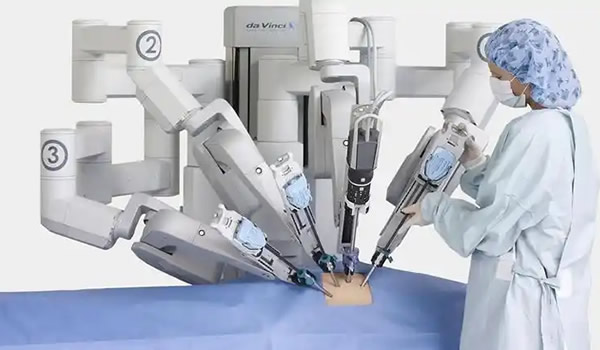Cancer is one of the leading causes of death across Asia, with rising incidence due to lifestyle changes, aging populations, and environmental exposures. The good news is that many cancers are preventable through healthy habits, early detection, and lifestyle modifications. This guide explores the most common cancers in Asia and offers practical prevention strategies for individuals and families.

Understanding the Cancer Burden in Asia
Asia accounts for more than half of the world’s cancer cases. Key patterns include:
- Liver cancer (China, Vietnam, Korea) linked to hepatitis infections and alcohol.
- Lung cancer (China, India, Japan) associated with smoking and pollution.
- Stomach cancer (Japan, Korea) linked to diet and Helicobacter pylori infection.
- Colorectal cancer rising in Singapore, Malaysia, and urban India due to diet shifts.
- Breast and cervical cancer remain major threats to women’s health.
Understanding these trends helps focus prevention efforts where they matter most.
Step 1: Stop Smoking and Limit Alcohol
- Tobacco causes lung, throat, mouth, and bladder cancers. Quitting smoking reduces risk within years.
- Alcohol increases risk of liver, breast, and esophageal cancer. Even moderate consumption should be minimized.
Practical tip: Replace smoking breaks with short walks or breathing exercises; switch alcoholic drinks for sparkling water or herbal teas.
Step 2: Protect Against Infections
Certain viruses and bacteria increase cancer risk:
- Hepatitis B and C: Lead to liver cancer. Vaccination and safe medical practices are crucial.
- HPV (Human Papillomavirus): Major cause of cervical cancer. Vaccination for girls and boys before sexual activity is recommended.
- Helicobacter pylori: Linked to stomach cancer; treat with antibiotics when diagnosed.
Step 3: Maintain a Healthy Diet
Food plays a critical role in cancer prevention.
- Eat More Plant-Based Foods: Fruits, vegetables, whole grains, beans, and lentils.
- Reduce Processed Meat and Red Meat: Linked to colorectal cancer.
- Limit Salt and Pickled Foods: Especially important in Japan and Korea where stomach cancer rates are high.
- Include Protective Foods: Garlic, turmeric, green tea, soy products, and omega-3 fatty acids from fish.
Tip: Follow the “rainbow diet”—eat a variety of colors daily to maximize nutrients.
Step 4: Stay Physically Active
Sedentary lifestyles increase risk of breast, colon, and endometrial cancers.
- Aim for 150 minutes of moderate exercise per week.
- Incorporate walking, swimming, cycling, tai chi, or yoga.
- Even simple changes, like taking stairs or walking after meals, make a difference.
Step 5: Maintain a Healthy Weight
Obesity is strongly linked to cancers of the breast, colon, pancreas, and liver.
- BMI Management: Keep BMI within 18.5–24.9.
- Waist Measurement: Abdominal fat is particularly harmful; waist circumference should be under 90 cm (men) and 80 cm (women).
- Practical Habits: Portion control, mindful eating, and avoiding late-night snacking.

Step 6: Reduce Environmental and Occupational Risks
- Air Pollution: Wear masks in high-pollution cities; use air purifiers at home.
- Workplace Safety: Protect against asbestos, industrial chemicals, and radiation.
- Sun Protection: Skin cancer rates are rising in Asia; use sunscreen and avoid excessive sun exposure.
Step 7: Participate in Regular Screening
Early detection saves lives. Recommended screenings include:
- Breast Cancer: Mammograms for women over 40.
- Cervical Cancer: Pap smears or HPV tests every 3–5 years for women aged 21–65.
- Colorectal Cancer: Colonoscopy starting at age 45–50.
- Liver Cancer: Ultrasound and blood tests (AFP) for those with hepatitis or cirrhosis.
- Lung Cancer: Low-dose CT scans for heavy smokers or ex-smokers.
Step 8: Strengthen Mental and Social Health
Chronic stress and social isolation indirectly increase cancer risk by weakening immunity and promoting unhealthy coping habits (smoking, drinking).
- Mindfulness & Meditation: Proven to lower stress and inflammation.
- Community Support: Joining wellness groups or cancer awareness networks improves adherence to healthy lifestyles.
Step 9: Family-Based Prevention Strategies
In Asia’s family-centered cultures, prevention works best when practiced together:
- Cook healthy meals as a family.
- Make exercise a shared activity.
- Support elders in attending health check-ups.
- Encourage open conversations about symptoms and risks.
Step 10: Action Checklist for Cancer Prevention
- Quit smoking immediately.
- Get vaccinated for hepatitis B and HPV.
- Eat a plant-based, low-salt, low-processed-meat diet.
- Exercise at least 150 minutes weekly.
- Maintain a healthy BMI and waist size.
- Limit alcohol and avoid binge drinking.
- Minimize pollution and occupational exposures.
- Schedule regular screenings according to age and risk.
- Manage stress through mindfulness, yoga, or social support.
- Educate family members and build prevention into daily routines.

Conclusion
Cancer prevention is not about a single action but a lifestyle system that integrates diet, exercise, vaccination, stress management, and medical screening. Asia faces a rising cancer burden, but with widespread education and preventive strategies, millions of cases can be avoided.
By taking proactive steps today, individuals and families can reduce risk, live longer, and contribute to a healthier society.
cancer prevention Asia, healthy lifestyle to prevent cancer, cancer risk reduction guide